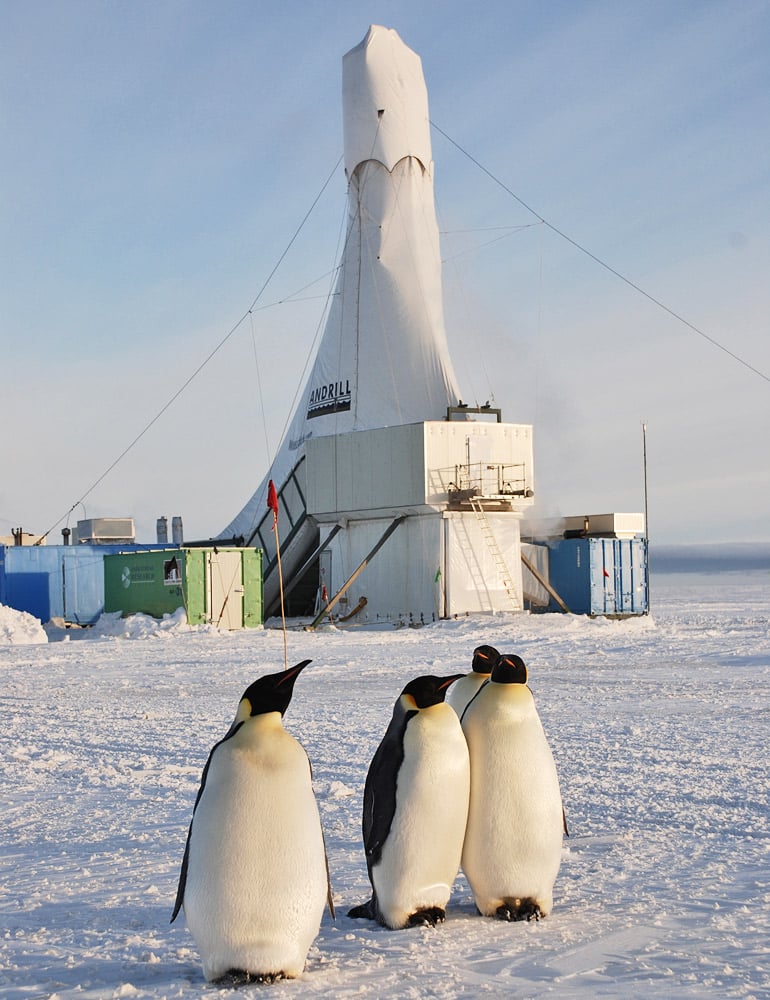The largest ice sheet on Earth was stable throughout the last warm period in geologic time, indicating it should hold up as temperatures continue to rise, researchers say.
The East Antarctic Ice Sheet is the world’s largest potential contributor to sea level rise (175 feet, if the whole thing melted). Unlike the Greenland and West Antarctic ice sheets, though, it’s been resistant to melting as conditions warm.
“This does not mean that at current atmospheric carbon dioxide levels, Antarctica won’t contribute to sea level rise.”
New research published in Nature shows that land-based sectors of the East Antarctic Ice Sheet were mostly stable throughout the Pliocene (5.3 to 2.6 million years ago), when carbon dioxide concentrations in the atmosphere were close to what they are today—around 400 parts per million.
“Based on this evidence from the Pliocene, today’s current carbon dioxide levels are not enough to destabilize the land-based ice on the Antarctic continent,” says lead author Jeremy Shakun, an assistant professor of earth and environmental science at Boston College.
“This does not mean that at current atmospheric carbon dioxide levels, Antarctica won’t contribute to sea level rise. Marine-based ice very well could and in fact is already starting to contribute, and that alone holds an estimated 20 meters of sea level rise. We’re saying that the terrestrial segment is more resilient at current carbon dioxide levels.”
Much of the East Antarctic Ice Sheet is land-based. Coastal regions and floating sheets of ice permanently attached to a landmass, known as ice shelves, are marine-based. This kind of ice is more sensitive to warming temperatures; past studies indicate that these portions of the East and West Antarctic Ice Sheets retreated at times throughout the Pliocene.

Researchers measured isotopes produced by the interaction between cosmic rays and the nucleus of an atom, called cosmogenic nuclides, in glacial sediment from Antarctic’s largest ice shelf. If the sediment contained significant concentrations of these nuclides, beryylium-10 and aluminum-26, they would know the region wasn’t covered in ice because it had been in contact with cosmic rays.
This was not the case for the East Antarctic Ice Sheet during the Pliocene.
Ancient ice sheet melted quicker than we thought
“The concentration of beryylium-10 and aluminum-26 in these sediments is profoundly low. They show no indication of being exposed to cosmic rays,” says coauthor Marc Caffee, a professor of physics and astronomy at Purdue University.
These extremely rare isotopes of beryllium and aluminum were measured by accelerator mass spectrometry, an extremely sensitive analytical technique for measuring long-lived radionuclides, in Purdue’s PRIME Lab.
Sea levels could bring greater storm damage to NYC
The findings rule out substantial melting of the East Antarctic Ice sheet during the past 8 million years, putting an upper limit on Pliocene sea level estimates, since melting of all marine-based ice in Antarctica and the Greenland Ice Sheet should contribute 100 feet of sea level rise at most. This agrees with the latest climate models, which predict that variations in Antarctic ice volumes are driven mostly by the melting of sea ice.
Other researchers from Purdue and Boston College and from Lawrence Livermore National Laboratory, the University of Vermont, and Victoria University of Wellington collaborated on this study. The National Science Foundation, Boston College, Vermont EPSCoR, and the New Zealand Ministry of Business and Innovation Employment funded the work.
Source: Purdue University



